Bread making is an art, but it doesn’t have to be a laborious one. For those looking to make the process more efficient and consistent, a bread maker may be a worthy investment. This kitchen appliance offers a range of benefits, from the convenience of a set-it-and-forget-it approach to the ability to make a variety of breads with customizable options. In this article, we explore the advantages of using a bread maker and how it can change the way you approach bread making.
The bread maker is known for its convenience, consistency and the ability to make a variety of breads with customizable options. On the other hand, hand kneading is known for providing emotional satisfaction and physical benefits. The debate centers around the different aspects of the bread-making process such as the time investment, quality of bread, cost, fresh ingredients, yeast, texture, temperature, humidity, shapes, sizes, technique, and more.
The Advantages of Using a Bread Maker
Bread making is an art, a science, a labor of love. And while I’m all for getting down and dirty with some hand kneading, there’s no denying the advantages of using a bread maker.
First off, convenience. With a bread maker, you can set it and forget it. You can mix your ingredients, hit a button, and go about your day. No need to constantly check on the dough, no need to worry about the temperature and humidity of your kitchen.
And let’s talk about consistency. With a bread maker, you can get a consistent loaf every time. The machine does all the hard work of kneading and rising, so you don’t have to worry about whether or not you’re doing it right.
Another advantage is that bread makers can make a variety of breads. Whether it’s a basic white bread or a fancy sourdough, a bread maker can handle it. And let’s not forget about the timer function, you can set it to have fresh bread ready when you wake up or come home from work.
Now, I’m not saying you should give up on hand kneading altogether. But if you’re short on time, or if you’re just looking for a little bit of extra help in the bread making department, a bread maker is definitely worth considering.
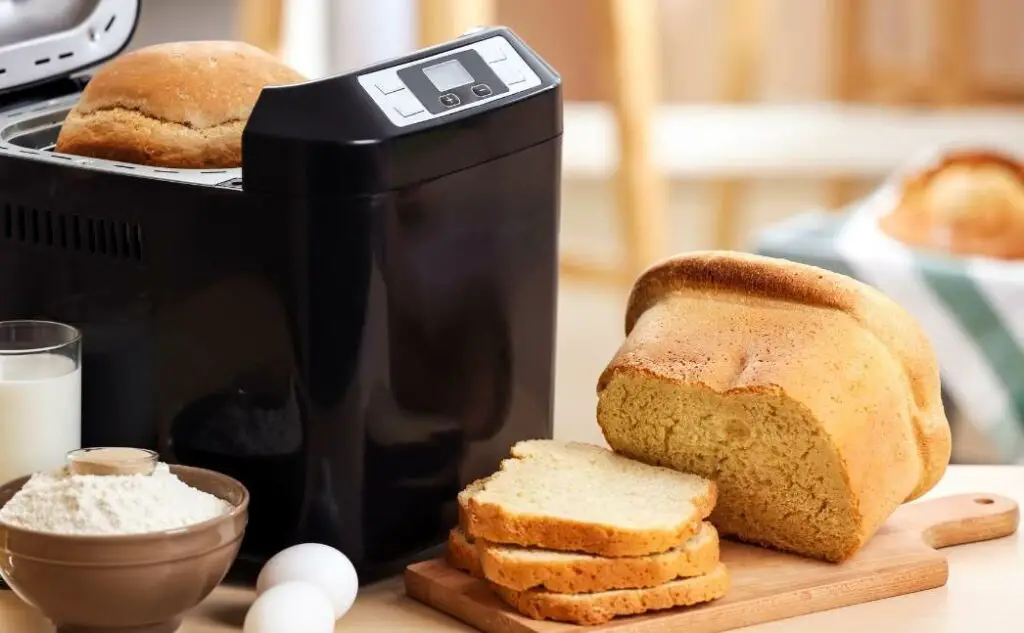
The Convenience of a Bread Maker
Bread making is a beautiful thing. But, it isn’t always easy. And that’s where a bread maker comes in handy. It’s all about convenience.
With a bread maker, you can mix up your ingredients, hit a button, and go about your day. No need to keep a constant watchful eye on the dough, no need to worry about the temperature and humidity of your kitchen. It’s like having your very own sous chef for bread making.
And the best part? You can set the timer function, so you can wake up to fresh bread or come home to a warm, freshly baked loaf. Now, that’s convenience at its finest.
The Cons of Using a Bread Maker
When it comes to bread making, a bread maker can certainly be a convenient option. But, like with anything, it’s not without its downsides.
One of the cons of using a bread maker is that you lose the tactile experience of kneading the dough by hand. There’s something about feeling the dough, working it, and watching it transform that is truly satisfying. And let’s not forget about the physical benefits of kneading, it’s a workout for your arms and hands.
Another downside is that a bread maker can be limiting in terms of the types of breads you can make. While it can handle a variety of breads, it can’t replicate the unique textures and flavors that come with hand kneading and traditional baking methods.
Also, bread makers can be quite expensive and take up a lot of counter space, which may not be practical for some people.
It’s worth noting that these cons, do not necessarily mean that a bread maker is a bad thing, it’s just that it has its own set of limitations. It’s ultimately up to the individual to weigh the pros and cons and decide if a bread maker fits their needs and preferences.
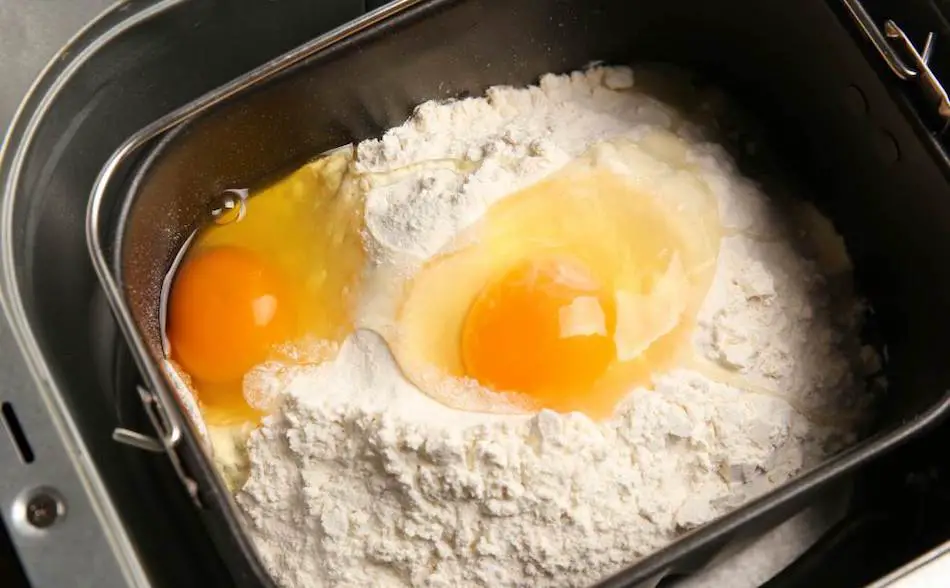
The Benefits of Hand Kneading
Bread making is an art, and hand kneading is a crucial aspect of that art. There are several benefits to this traditional method of bread making that cannot be replicated by a bread maker.
First, there is the tactile experience of working with the dough. The sensation of feeling the dough transform under your hands, the therapeutic motion of kneading, it’s a unique and satisfying experience. Not only that, but it’s also a great workout for your arms and hands.
Another benefit of hand kneading is the ability to create unique textures and flavors. The tactile nature of hand kneading allows bakers to make adjustments to the dough as they go, creating breads that are truly one-of-a-kind.
Hand kneading allows bakers to work with a variety of flours and grains, which can create breads with distinct flavors and nutritional value.
It’s also worth noting that hand kneading can be more cost effective than using a bread maker, as it doesn’t require any special equipment or appliances.
Overall, hand kneading is a time-honored tradition that offers a unique and satisfying experience, allowing bakers to create breads with unique textures, flavors and nutritional value.
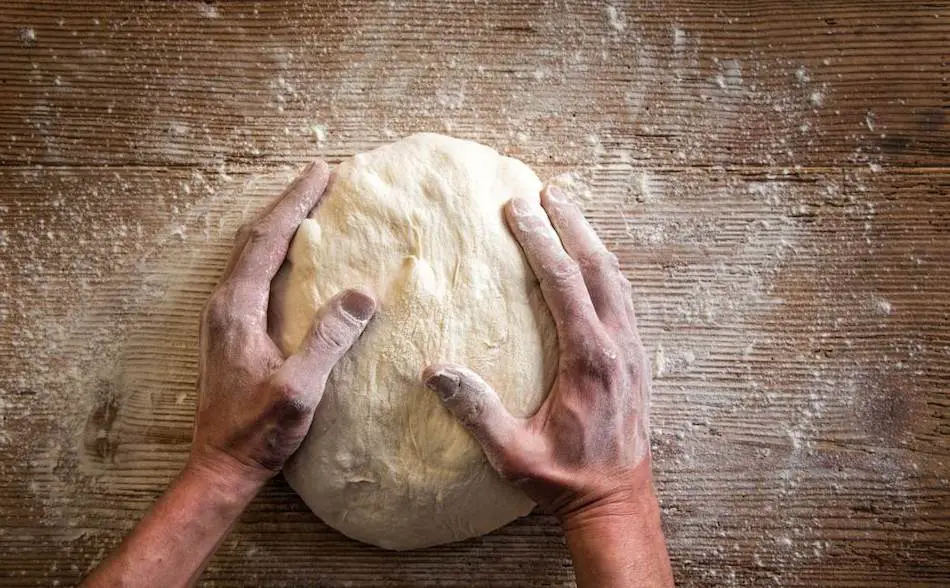
The Physical Benefits of Hand Kneading
Hand kneading dough is an essential aspect of bread making, but it also offers some physical benefits that should not be overlooked. One of the most obvious benefits is that it can be a great workout for the arms and hands. The repetitive motion of kneading can help to tone and strengthen the muscles in these areas.
Also, hand kneading can also help with stress relief and relaxation. The repetitive motion of kneading can be meditative, and the tactile sensation of the dough can be soothing. It is a form of light exercise that can be done at home with no need of gym membership or equipment.
The other thing about hand kneading is a low-impact activity that can be enjoyed by people of all ages, including those with limited mobility. It is an easy and accessible form of exercise that can be done in the comfort of one’s own home.
The Emotional Satisfaction of Hand Kneading
Hand kneading dough is not only a technique, it is also an experience. The act of kneading bread dough by hand is an immensely satisfying one. It’s hard to explain, but there’s something about the feel of the dough, the rhythm of the kneading, and the way it transforms under your hands, that is truly satisfying.
It’s an emotional connection that you can’t achieve with a bread maker, there’s a sense of accomplishment, a connection to the food, and a sense of nostalgia. For some, it may remind them of their childhood, of the times they spent with their grandmothers or mothers, learning how to bake bread. It’s a connection to tradition and family.
Also, kneading bread dough by hand allows you to truly feel and understand the dough, and make necessary adjustments as you go, giving you more control over the final product.
The Cons of Hand Kneading
Hand kneading bread dough is a traditional and satisfying method of bread making, but it also has its own set of limitations.
One of the biggest cons is the time investment. Kneading dough by hand takes longer than using a bread maker, particularly when it comes to larger batches of dough. It requires more effort and attention to detail, which can be tiring for some people.
Another downside is that hand kneading can be more difficult for people with limited mobility or certain physical conditions. Kneading dough by hand can be quite strenuous on the arms and hands, making it less accessible for some individuals.
Also, hand kneading can also be affected by the temperature and humidity of the kitchen, which can make it harder to achieve consistent results.
It’s also worth noting that hand kneading can be messier than using a bread maker and requires more cleanup.
It’s important to note that these cons do not necessarily mean that hand kneading is a bad thing, it’s just that it has its own set of limitations. It’s ultimately up to the individual to weigh the pros and cons and decide if hand kneading fits their needs and preferences.
Comparing the Time Investment of Each Method
When it comes to bread making, time is an important factor to consider, and both hand kneading and using a bread maker have their own time investments.
Hand kneading dough can be a time-consuming process, particularly when it comes to larger batches of dough. It requires more effort and attention to detail, which can be tiring for some people. It is important to factor in the time it takes to mix the ingredients, knead the dough, wait for the dough to rise, shape the dough, and finally baking.
On the other hand, using a bread maker is generally quicker as it does most of the work for you. It is as simple as mixing the ingredients and letting the machine take care of the kneading, rising and baking. However, it is important to keep in mind that some bread makers can take up to 3 hours to complete a cycle.
The time investment for both methods can vary depending on the type of bread being made, the recipe and the individual’s experience. Ultimately, it is up to the individual to decide which method fits their time constraints and preferences.
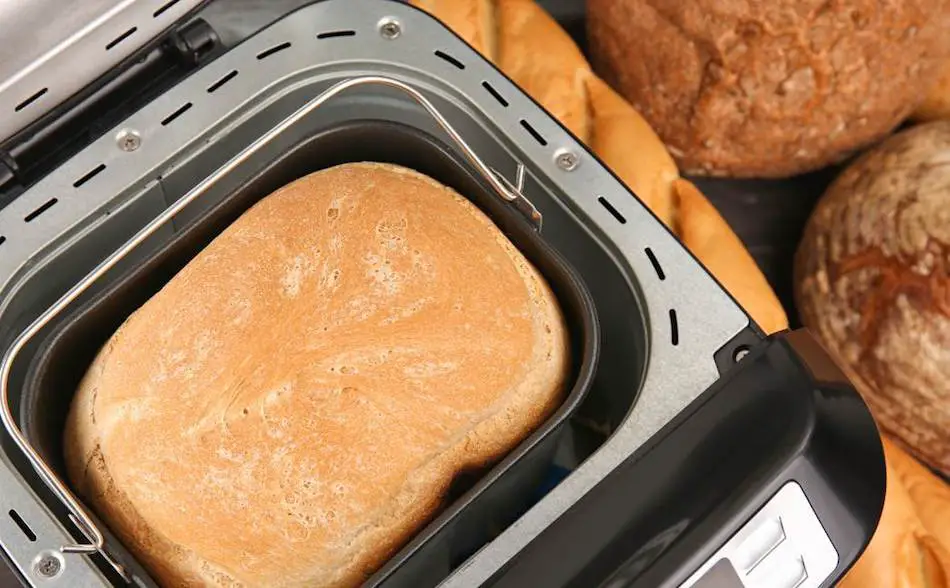
Comparing the Quality of Bread from Each Method
Bread making is an art, and the quality of the bread is of utmost importance. Both hand kneading and using a bread maker can produce delicious bread, but the final product can be different depending on the method used.
Hand kneading allows for more control over the final product. It allows bakers to make adjustments to the dough as they go, resulting in breads that are truly one-of-a-kind, with unique textures and flavors. Additionally, hand kneading allows bakers to work with a variety of flours and grains, resulting in breads with distinct flavors and nutritional value.
On the other hand, a bread maker can produce a consistently good loaf of bread, but it may lack the unique textures and flavors that come with hand kneading and traditional baking methods. Additionally, the machine doesn’t allow as much flexibility and creativity as hand kneading does.
The quality of the bread depends on many factors, including the recipe, ingredients and the bakers experience. However, both methods have the potential to produce delicious bread, it’s just a matter of preference and what you are looking for in your final product.
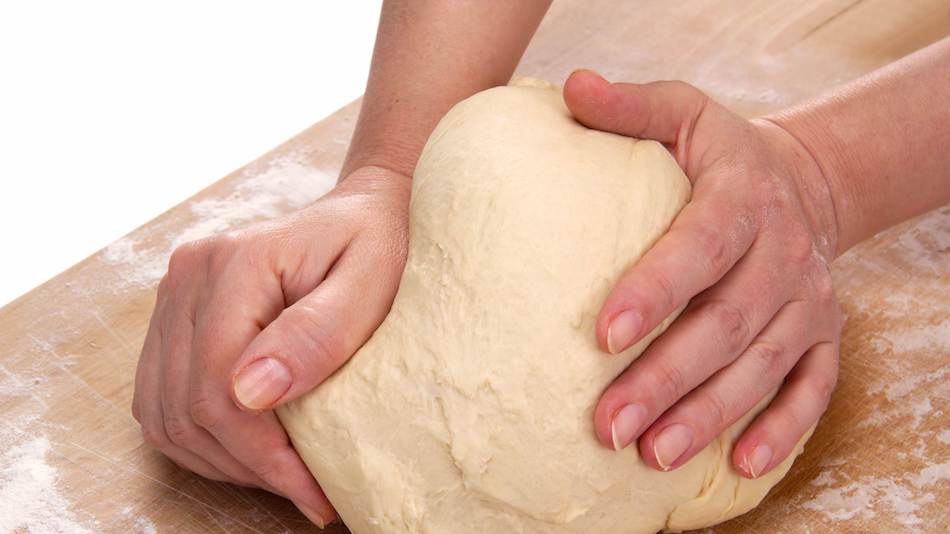
The Cost Comparison of Bread Makers vs Hand Kneading
Cost is always an important factor to consider. Both hand kneading and using a bread maker have their own costs associated with them.
Hand kneading is generally considered a more cost-effective method as it doesn’t require any special equipment or appliances. All that is needed are basic baking supplies such as flour, yeast, salt, and water. However, the cost of ingredients can vary depending on the type of bread being made and the quality of ingredients used.
Bread makers can be quite expensive, with prices varying depending on the features and brand. Additionally, the cost of electricity to run the machine must also be taken into account.
It’s worth noting that the overall cost of bread making also includes factors such as the cost of ingredients, time, and effort. Additionally, a bread maker may have a higher initial cost, but it can save you time and money in the long run if you plan to make bread frequently.
The Importance of Fresh Ingredients in Bread Making
As with any form of cooking or baking, fresh ingredients are key. Yeast, flour, salt, and water are the basic building blocks of bread, and the fresher these ingredients are, the better your bread will be. Yeast that’s been sitting in your pantry for months, for example, may not be as active as fresh yeast, which means your bread may not rise as well. Similarly, flour that’s been sitting around for a long time can lose some of its gluten-forming proteins, which can also affect the rise and texture of your bread.
Salt is also an important ingredient in bread making. It helps to balance the flavor of the bread and also helps to control the fermentation of the dough. Salt that’s been sitting in your pantry for a while can lose some of its flavor and may not be as effective in controlling fermentation.
Water is another important ingredient in bread making. The pH and mineral content of the water can affect the fermentation and rise of the dough. Tap water that’s been sitting in a plastic container for a while can pick up plastic flavors, so it’s best to use fresh, filtered water.
In short, using fresh ingredients in bread making will result in a better-tasting and better-textured bread. So when you’re making bread, make sure to use the freshest ingredients you can find.
The Role of Yeast in Bread Making
Yeast is a vital component in bread making. It’s a living microorganism that ferments the sugars present in the dough, creating carbon dioxide and alcohol which causes the dough to rise. Without yeast, bread would be dense and heavy, not the fluffy, airy loaf we are accustomed to.
The type of yeast you use is essential. There are two types of yeast: active dry yeast and instant yeast. Active dry yeast must be rehydrated before use, while instant yeast can be mixed directly into the dough. Both types will work but instant yeast is more convenient and can save time in the bread-making process.
The freshness of yeast also plays a vital role in bread making. Yeast that has been sitting in the pantry for a while may not be as active as fresh yeast, which means your bread may not rise as well. This can lead to a loaf that is dense and heavy, rather than light and airy. To ensure your bread rises properly, it’s crucial to use fresh yeast.
Yeast also contributes to the flavor of bread. Yeast ferments the sugars in the dough, which creates alcohol and carbon dioxide. As the bread bakes, the alcohol evaporates, leaving behind a subtle, yeasty flavor. Using fresh yeast will give a better flavor than old yeast.
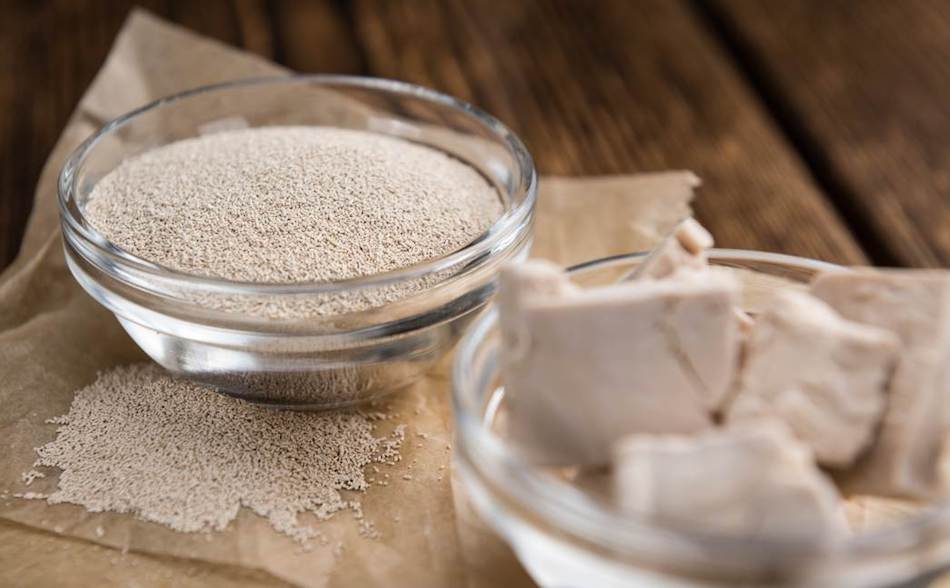
The Science of Kneading and its Impact on Bread Texture
Kneading is a crucial step that can have a significant impact on the texture of the final product. Kneading is the process of working the dough by hand or with a mixer to develop the gluten in the flour, which gives bread its structure and texture.
When flour and water are mixed together, glutenin and gliadin proteins present in the flour combine to form gluten. Kneading works the dough, helping to align the gluten proteins in a specific direction, creating a network of gluten strands. This network gives bread its structure and allows it to rise.
The amount of kneading also plays a role in the texture of bread. Kneading dough for a longer period of time will develop more gluten, resulting in a bread with a chewier texture. On the other hand, if the dough is kneaded less, the bread will have a softer texture.
It is important to note that over-kneading the dough can lead to a tough and chewy bread. This happens because over-kneading can cause the gluten strands to break, resulting in a bread that is dense and heavy. So, it’s crucial to find the perfect balance of kneading to achieve the desired texture.
The Different Types of Bread that can be Made
Bread making is an ancient art that has evolved over time to create a wide variety of different bread types. From sourdough to focaccia, there’s a bread out there to suit every taste and preference.
One of the most popular types of bread is sourdough bread. Sourdough bread is made using a sourdough starter, which is a mixture of flour and water that has been fermented with wild yeast. Sourdough bread is known for its tangy flavor and chewy texture.
Another popular type of bread is French bread, also known as baguette. French bread is made using a combination of flour, water, yeast, and salt. It is characterized by its crisp crust and soft interior.
Focaccia is another type of bread that is becoming increasingly popular. It is an Italian bread that is characterized by its soft texture, and it’s often topped with herbs and olive oil.
Rye bread is another type of bread that has been around for centuries. It is made using a combination of rye flour, water, yeast, and salt. Rye bread is known for its strong, earthy flavor and dense texture.
Pita bread is a type of round, flat bread that is commonly used in Mediterranean and Middle Eastern cuisine. It is made using flour, water, yeast, and salt. Pita bread is known for its pocket-like structure that can be filled with a variety of different ingredients.
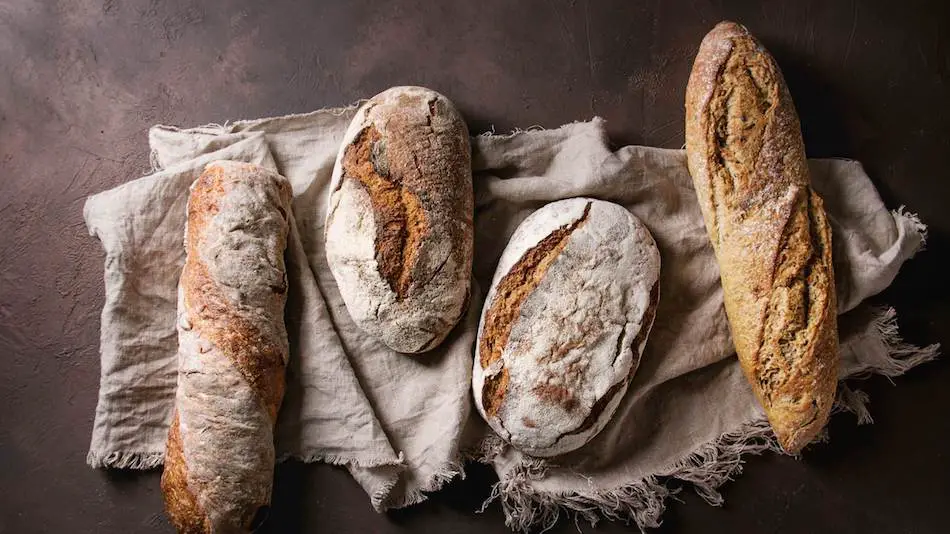
The Role of Temperature and Humidity in Bread Making
Temperature and humidity play a vital role in the final outcome of the bread. Temperature can affect the fermentation process, while humidity can affect the crust of the bread.
Temperature can affect the fermentation of the dough, which is the process that causes the dough to rise. Yeast is a living organism, and it ferments the sugars in the dough, creating carbon dioxide that causes the dough to rise. Yeast ferments best at a temperature between 75 and 85 degrees Fahrenheit. If the dough is too warm, the yeast will ferment too quickly, causing the bread to rise too quickly and then collapse. On the other hand, if the dough is too cold, the yeast will ferment too slowly, resulting in a bread that doesn’t rise properly.
Humidity also plays a role in bread making. The humidity in the air can affect the crust of the bread. High humidity can make the crust soft, while low humidity can make the crust hard. This is because when the bread is baking, the water in the dough turns into steam, which helps to create a nice, crisp crust. If the humidity is high, there will be more water in the air, which can make the crust soft. If the humidity is low, there will be less water in the air, which can make the crust hard.
The Importance of Proper Measurements in Bread Making
In bread making, measurements are key. Bakers rely on precise measurements to ensure that the ingredients are in the right proportion to create a successful loaf of bread. The right balance of flour, water, yeast, and salt is essential to achieve the desired texture and flavor of the bread.
When it comes to flour, for example, using too much flour can result in a dense and heavy loaf of bread, while using too little flour can result in a bread that doesn’t rise properly. The same goes for water, yeast, and salt. Each ingredient has a specific role in the bread-making process, and using the right amount of each ingredient is essential to achieve the desired texture and flavor of the bread.
Measuring the ingredients correctly is also important for repeatability. If you have a recipe that you enjoy, the ability to recreate it again and again is key. And if you want to make changes to the recipe, being able to measure the ingredients accurately can help you make adjustments.
Proper measurements also allow for more precise control over the bread making process. For example, if a bread recipe calls for a specific temperature and humidity, precise measurements allow bakers to maintain those conditions throughout the process, which can help to achieve the desired outcome.

